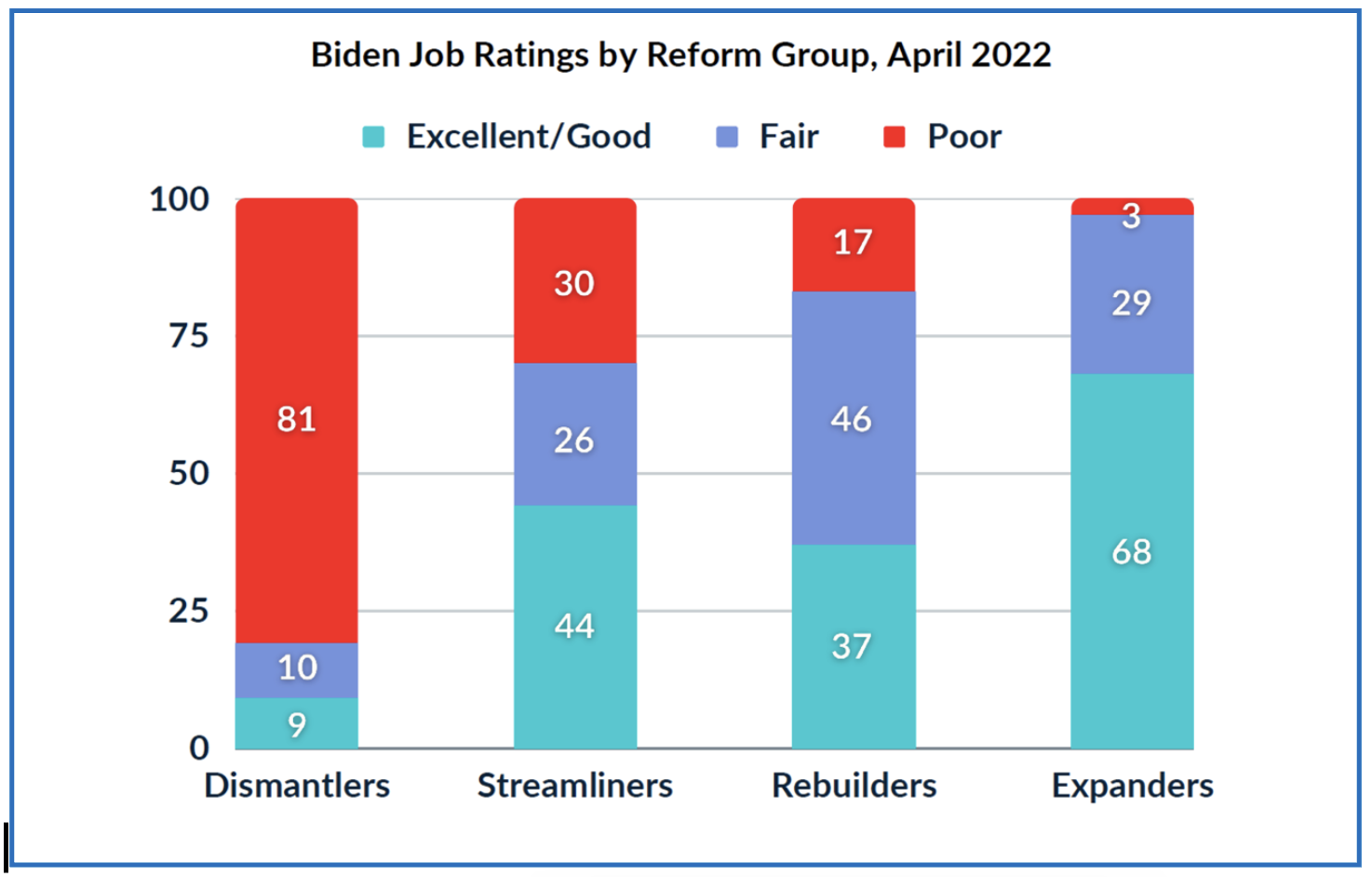Biden’s Dilemma, Part 5: He Needs More Government Rebuilders on His Side
The latest in a series of infographics on Americans’ views of government reform heading into the 2024 election.
President Biden heads toward the 2024 presidential campaign with the federal government’s job rating in decline, support for a smaller government increasing, and the demand for major government reform at a 30-year high. This series of charts and graphs explores the current landscape when it comes to Americans’ views of government reform.
Since the 1990s, when the Pew Research Center first asked Americans their preferences on the size of government, Republicans have led the call for a smaller government providing fewer services, while Democrats have pushed for a bigger government that provides more services. As hard as the two parties work to expand their bases, neither can win without holding their core support.
When it comes to their views of government reform, Americans can be divided into four categories: Rebuilders, expanders, dismantlers and streamliners. Biden, with his advocacy of activist government, is an expander.
Even if the ranks of his fellow expanders grows along the way to the 2024 election, Biden must deal with the 77% of respondents who recently told the Pew Research Center that “dealing with federal government agencies is often not worth the trouble,” the 63% who said the “federal government does a poor job responding to the needs of ordinary citizens,” and the 72% who said the federal government is not careful with taxpayer money. He needs a reform agenda that addresses these doubters.
The dismantlers gave Biden his lowest job ratings for running the federal government and its programs in January 2023, while the expanders gave him his highest marks. To make inroads with the rebuilders who could theoretically support his candidacy, Biden needs to cut down on government breakdowns.

The trend lines and analyses presented in this series come from stand-alone random-sample surveys conducted by Lake Research Partners, Maguire Research Services, the Pew Research Center, SSRS, and the University of Pennsylvania Annenberg Public Policy Center. Occasional data points were also harvested from search engines managed by survey aggregators such as PollingReport.com, the Roper Center’s iPOLL database, and publicly available Pew Research Center surveys dating back to 1997. All survey findings were based on random-sample surveys of at least 1,000 respondents interviewed by cell phone and landline, with estimated error rates of 3% to 4% at a 95% confidence level.








